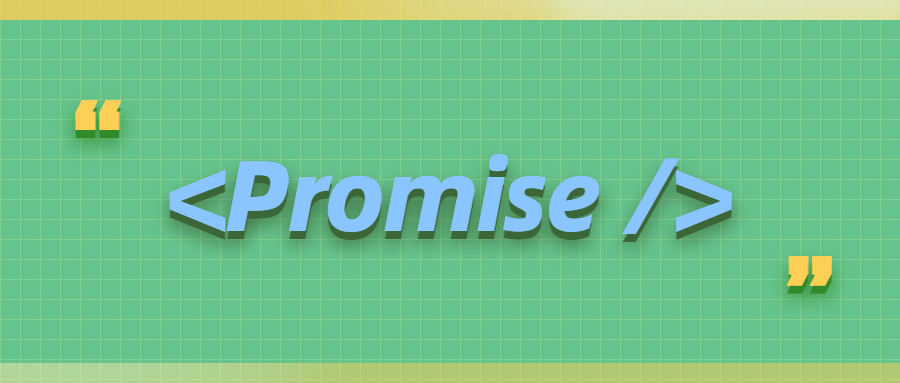then, catch, finally如何影响返回的Promise实例状态

 原创@前端司南
原创@前端司南虽然Promise是开发过程中使用非常频繁的一个技术点,但是它的一些细节可能很多人都没有去关注过。我们都知道,.then, .catch, .finally都可以链式调用,其本质上是因为返回了一个新的Promise实例,而这些Promise实例现在的状态是什么或者将来会变成什么状态,很多人心里可能都没个底。我自己也意识到了这一点,于是我通过一些代码试验,发现了一些共性。如果您对这块内容还没有把握,不妨看看。
阅读本文前,您应该对Promise有一些基本认识,比如:
Promise有pending,fulfilled,rejected三种状态,其决议函数resolve()能将Promise实例的状态由pending转为fulfilled,其决议函数reject()能将Promise实例的状态由pending转为rejected。Promise实例的状态一旦转变,不可再逆转。
本文会从一些测验代码入手,看看Promise的几个原型方法在处理Promise状态时的一些细节,最后对它们进行总结归纳,加深理解!
then的语法形式如下:
p.then(onFulfilled[, onRejected]);
onFulfilled可以接受一个value参数,作为Promise状态决议为fulfilled的结果,onRejected可以接受一个reason参数,作为Promise状态决议为rejected的原因。
- 如果
onFulfilled或onRejected不返回值,那么.then返回的Promise实例的状态会变成fulfilled,但是伴随fulfilled的value会是undefined。
new Promise((resolve, reject) => {
resolve(1)
}).then(value => {
console.log('resolution occurred, and the value is: ', value)
}, reason => {
console.log('rejection occurred, and the reason is: ', reason)
}).then(value => {
console.log('resolution of the returned promise occurred, and the value is: ', value)
}, reason => {
console.log('rejection of the returned promise occurred, and the reason is: ', reason)
})
- 如果
onFulfilled或onRejected返回一个值x,那么.then返回的Promise实例的状态会变成fulfilled,并且伴随fulfilled的value会是x。注意,一个非Promise的普通值在被返回时会被Promise.resolve(x)包装成为一个状态为fulfilled的Promise实例。
new Promise((resolve, reject) => {
reject(2)
}).then(value => {
console.log('resolution occurred, and the value is: ', value)
}, reason => {
console.log('rejection occurred, and the reason is: ', reason)
return 'a new value'
}).then(value => {
console.log('resolution of the returned promise occurred, and the value is: ', value)
}, reason => {
console.log('rejection of the returned promise occurred, and the reason is: ', reason)
})
- 如果
onFulfilled或onRejected中抛出一个异常,那么.then返回的Promise实例的状态会变成rejected,并且伴随rejected的reason是刚才抛出的异常的错误对象e。
new Promise((resolve, reject) => {
resolve(1)
}).then(value => {
console.log('resolution occurred, and the value is: ', value)
throw new Error('some error occurred.')
}, reason => {
console.log('rejection occurred, and the reason is: ', reason)
}).then(value => {
console.log('resolution of the returned promise occurred, and the value is: ', value)
}, reason => {
console.log('rejection of the returned promise occurred, and the reason is: ', reason)
})
- 如果
onFulfilled或onRejected返回一个Promise实例p2,那么不管p2的状态是什么,.then返回的新Promise实例p1的状态会取决于p2。如果p2现在或将来是fulfilled,那么p1的状态也随之变成fulfilled,并且伴随fulfilled的value也与p2进行resolve(value)决议时传递的value相同;
new Promise((resolve, reject) => {
resolve(1)
}).then(value => {
console.log('resolution occurred, and the value is: ', value)
return Promise.resolve('a fulfilled promise')
}, reason => {
console.log('rejection occurred, and the reason is: ', reason)
}).then(value => {
console.log('resolution of the returned promise occurred, and the value is: ', value)
}, reason => {
console.log('rejection of the returned promise occurred, and the reason is: ', reason)
})
这个逻辑同样适用于rejected的场景。也就是说,如果p2的状态现在或将来是rejected,那么p1的状态也随之变成rejected,而reason也来源于p1进行reject(reason)决议时传递的reason。
new Promise((resolve, reject) => {
reject(1)
}).then(value => {
console.log('resolution occurred, and the value is: ', value)
}, reason => {
console.log('rejection occurred, and the reason is: ', reason)
return new Promise((resolve, reject) => {
setTimeout(() => {
reject('a promise rejected after 3 seconds.')
}, 3000)
})
}).then(value => {
console.log('resolution of the returned promise occurred, and the value is: ', value)
}, reason => {
console.log('rejection of the returned promise occurred, and the reason is: ', reason)
})
catch的语法形式如下:
p.catch(onRejected);
.catch只会处理rejected的情况,并且也会返回一个新的Promise实例。
.catch(onRejected)与then(undefined, onRejected)在表现上是一致的。
事实上,catch(onRejected)从内部调用了then(undefined, onRejected)。
- 如果
.catch(onRejected)的onRejected回调中返回了一个状态为rejected的Promise实例,那么.catch返回的Promise实例的状态也将变成rejected。
new Promise((resolve, reject) => {
reject(1)
}).catch(reason => {
console.log('rejection occurred, and the reason is: ', reason)
return Promise.reject('rejected')
}).then(value => {
console.log('resolution of the returned promise occurred, and the value is: ', value)
}, reason => {
console.log('rejection of the returned promise occurred, and the reason is: ', reason)
})
- 如果
.catch(onRejected)的onRejected回调中抛出了异常,那么.catch返回的Promise实例的状态也将变成rejected。
new Promise((resolve, reject) => {
reject(1)
}).catch(reason => {
console.log('rejection occurred, and the reason is: ', reason)
throw 2
}).then(value => {
console.log('resolution of the returned promise occurred, and the value is: ', value)
}, reason => {
console.log('rejection of the returned promise occurred, and the reason is: ', reason)
})
- 其他情况下,
.catch返回的Promise实例的状态将是fulfilled。
不管一个Promise的状态是fulfilled还是rejected,传递到finally方法的回调函数onFinally都会被执行。我们可以把一些公共行为放在onFinally执行,比如把loading状态置为false。
注意,onFinally不会接受任何参数,因为它从设计上并不关心Promise实例的状态是什么。
p.finally(function() {
// settled (fulfilled or rejected)
});
finally方法也会返回一个新的Promise实例,这个新的Promise实例的状态也取决于onFinally的返回值是什么,以及onFinally中是否抛出异常。
你可以通过修改以下代码中的注释部分来验证,不同的返回值对于finally返回的Promise实例的状态的影响。
new Promise((resolve, reject) => {
reject(1)
}).then(value => {
console.log('resolution occurred, and the value is: ', value)
}, reason => {
console.log('rejection occurred, and the reason is: ', reason)
return Promise.resolve(2);
// return Promise.reject(3)
}).finally(() => {
// return Promise.resolve(4)
// return Promise.reject(5)
throw new Error('an error')
}).then(value => {
console.log('resolution of the returned promise occurred, and the value is: ', value)
}, reason => {
console.log('rejection of the returned promise occurred, and the reason is: ', reason)
})
综合以上来看,不管是.then(onFulfilled, onRejected),还是.catch(onRejected),或者是.finally(onFinally),它们返回的Promise实例的状态都取决于回调函数是否抛出异常,以及返回值是什么。
如果回调函数的返回值是一个状态为
rejected的Promise实例,那么.then,.catch或.finally返回的Promise实例的状态就是rejected。如果回调函数的返回值是一个还未决议的
Promise实例p2,那么.then,.catch或.finally返回的Promise实例p1的状态取决于p2的决议结果。如果回调函数中抛出了异常,那么
.then,.catch或.finally返回的Promise实例的状态就是rejected,并且reason是所抛出异常的对象e。其他情况下,
.then,.catch或.finally返回的Promise实例的状态将是fulfilled。
由于.then会返回一个新的Promise实例,而在.then回调中抛出了异常,导致这个新Promise的状态变成了rejected,而.catch正是用于处理这个新的Promise实例的rejected场景的。
new Promise((resolve, reject) => {
resolve(1)
}).then(value => {
console.log('resolution of the returned promise occurred, and the value is: ', value)
var a = b; // 未定义b
}).catch(reason => {
console.log('caught the error occured in the callback of then method, and the reason is: ', reason)
})
最关键一点就是要理解:每次.then, .catch, .finally都产生一个新的Promise实例。
上文也提到了,.then, .catch, .finally都产生一个新的Promise实例,所以这种链式调用的对象实例已经发生了变化。可以理解为:
Promise.prototype.then = function() {
// balabala
return new Promise((resolve, reject) => {
// if balabala
// else if balabala
// else balabala
});
}
而jQuery链式调用是基于同一个jQuery实例的,可以简单表述为:
jQuery.fn.css = function() {
// balabala
return this;
}❤️ 感谢支持
本文主要是参考了MDN和《你不知道的JavaScript(下卷)》上关于Promise的知识点,简单分析了.then, .catch, .finally中回调函数的不同行为对于三者返回的Promise实例的影响,希望对大家有所帮助。
- 收藏吃灰不如现在就开始学习,奥利给!
- 如果您觉得本文有所帮助,请留下您的点赞关注支持一波,谢谢!
- 快关注公众号前端司南,与笔者一起交流学习吧!
